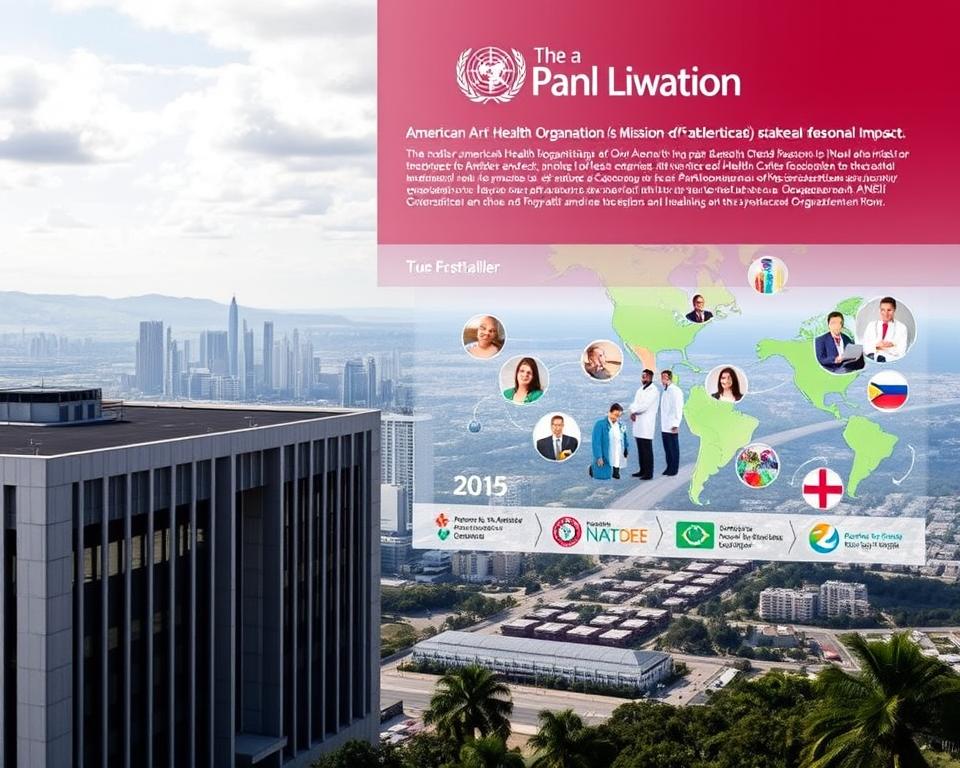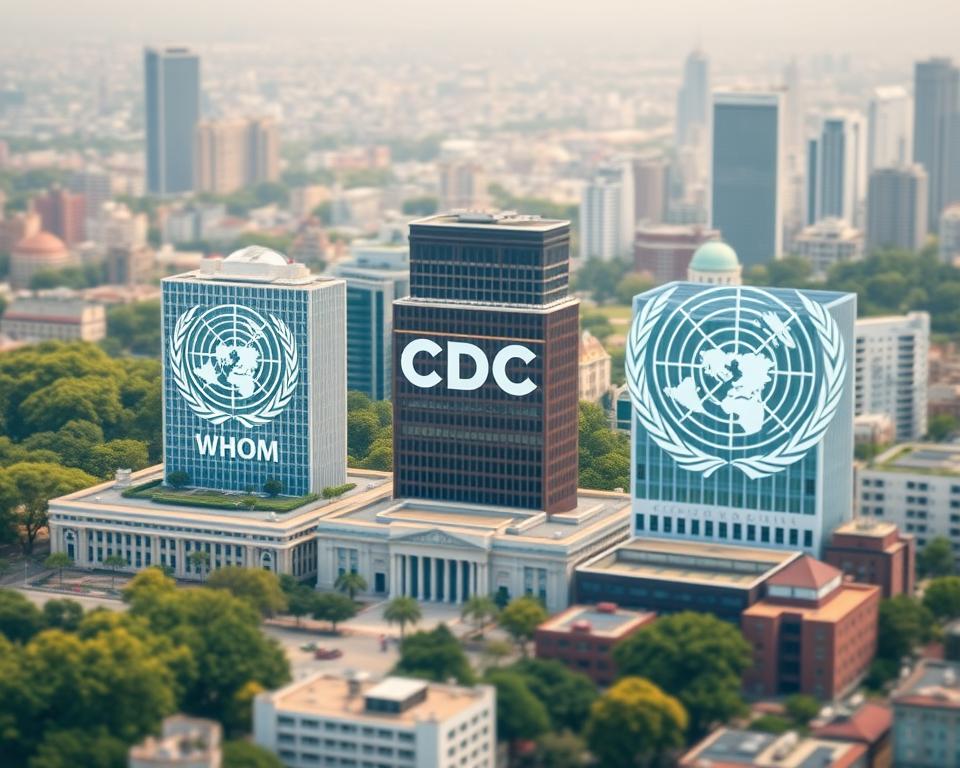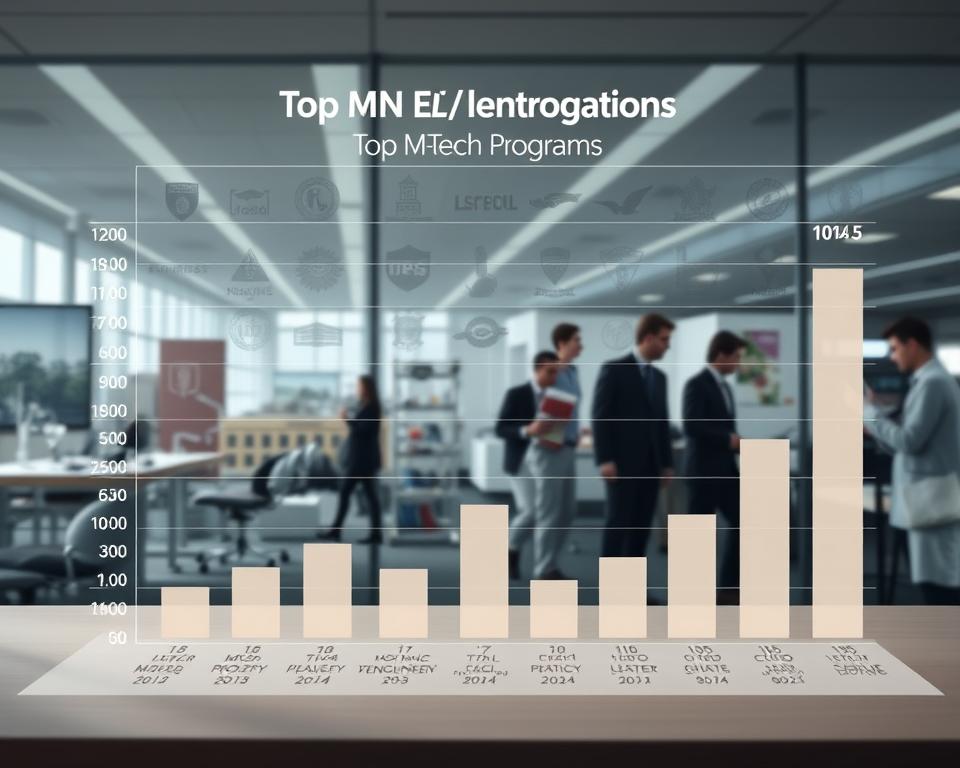
What is the Pan American Health Organization?
Did you know that the Pan American Health Organization (PAHO) has been serving as a critical health advocate in the Americas for over 120 years? Established in 1902, PAHO is not only the oldest international public health organization but also the regional office for the World Health Organization (WHO). This unique role underscores its significance in addressing a wide range of health challenges across the continent.
The Pan American Health Organization definition encompasses a specialized agency dedicated to improving health outcomes and living standards throughout the Americas. Its efforts include advising governments, implementing essential health programs, and conducting in-depth research that directly affects millions of lives.
So, what is the Pan American Health Organization? It is a vital entity that plays a strategic leadership role in public health issues, emphasizing collaboration and innovation in order to tackle some of the most pressing health challenges faced by its member states.

Key Takeaways
- Established in 1902, PAHO has over a century of experience in public health.
- It serves as the regional office for the World Health Organization in the Americas.
- PAHO focuses on improving health outcomes and living standards.
- The organization collaborates with governments to implement health programs.
- Health research conducted by PAHO impacts millions of lives across the continent.
Overview of the Pan American Health Organization
The Pan American Health Organization (PAHO) plays a vital role in the healthcare landscape of the Americas. This institution’s mission revolves around the promotion of public health and the enhancement of healthcare systems across member countries. It operates under the framework defined by its member states and addresses various health challenges that impact the region.
Importance of Health Organizations in the Americas
Health organizations significantly influence the overall well-being of populations in the Americas. They work to reduce health disparities, implement disease control measures, and foster healthy lifestyles. Institutions like PAHO are essential in establishing guidelines and strategies to tackle pressing health issues and ensure that effective healthcare services reach those in need.
Primary Functions and Areas of Focus
PAHO engages in a variety of functions tailored to address the diverse health needs of its member nations. The organization prioritizes:
- Infectious disease control: Combatting diseases such as malaria, HIV/AIDS, and tuberculosis.
- Maternal and child health: Ensuring the health of mothers and children through maternal care programs.
- Chronic diseases: Focusing efforts on curbing the rise of non-communicable diseases.
- Environmental health: Addressing health risks posed by environmental factors.
- Emergency preparedness and response: Equipping countries to better handle health crises.
This pan american health organization overview captures the critical nature of health organizations in improving health outcomes and facilitating healthcare advancements throughout the Americas.
Pan American Health Organization Definition
The Pan American Health Organization is a vital institution dedicated to improving public health across the Americas. As a leading regional organization, its mission focuses on enhancing health outcomes through collaboration with member countries. This organization provides essential technical support and works to build the capacity of national health systems.
The pan american health organization definition encompasses various responsibilities, including the coordination of health initiatives and responses to public health emergencies. By aligning with global health standards, it ensures that member nations can effectively tackle health challenges. Through its advocacy and support, the organization seeks to provide access to essential health services and promote well-being in diverse communities.
Detailed Explanation of the Organization
Since its establishment, the Pan American Health Organization has played a critical role in fostering cooperation among countries. It promotes healthier populations by addressing issues like disease prevention, health education, and emergency response preparedness. This organization serves not just as a governing body, but as a champion for health equity, aiming to reduce disparities in access to healthcare across the region.

History of the Pan American Health Organization
The pan american health organization history reflects a rich tapestry of health advancements and collaborations across the Americas. Founded in 1902, PAHO emerged from the earlier International Sanitary Bureau, which addressed health issues that crossed national borders. This evolution marked the beginning of a dedicated effort to improve public health throughout the continent.
Founding and Evolution
The establishment of PAHO came as a response to the growing need for a coordinated approach to regional health challenges. Initially focusing on contagious diseases, the organization expanded its scope over time. Key developments included the relocation of its headquarters to Washington, D.C., in 1949, which established a central hub for operations and strategic health initiatives. The integration with the World Health Organization in 1948 further solidified its global health standing.
Key Milestones in Its Development
Several milestones highlight the organization’s progress in enhancing public health. The adoption of the Health for All policy in 1977 emphasized accessibility and equity in healthcare throughout the Americas. Each phase of the pan american health organization history has been characterized by significant advancements in combating public health issues, reinforcing its vital role on the global stage.
| Year | Milestone | Impact |
|---|---|---|
| 1902 | Founding of PAHO | Creation of a regional framework to address health threats |
| 1948 | Integration with WHO | Strengthened global collaboration in public health |
| 1949 | Headquarters in Washington, D.C. | Centralized operations for improved coordination |
| 1977 | Adoption of Health for All policy | Focused efforts on health accessibility and equity |
Mission of the Pan American Health Organization
The pan american health organization mission revolves around enhancing health and ensuring quality of life across the Americas. Rooted in a commitment to address pressing public health challenges, the organization actively promotes effective health systems while striving for health equity among its member states. This commitment transforms the health landscape by fostering collaboration and advocacy on multiple fronts.
Core Objectives and Values
Central to the pan american health organization mission are its core objectives aimed at improving health outcomes. These objectives include:
- Strengthening national health systems: Ensuring that member states have robust frameworks in place to support healthcare delivery.
- Promoting preventive health measures: Encouraging initiatives that prevent disease before it manifests.
- Addressing social determinants of health: Recognizing that factors like education, socioeconomic status, and environment play significant roles in health outcomes.
Role in Global Health Initiatives
The pan american health organization mission extends to a broader scope through its involvement in global health initiatives. The organization actively shapes policies addressing critical issues such as tobacco control and vaccination programs. Its expertise also plays a vital role in managing pandemics, including strategies for tackling COVID-19. This proactive stance not only highlights the organization’s influence in directing public health policy but also showcases its commitment to global health improvements.
Goals of the Pan American Health Organization
The Pan American Health Organization goals focus on enhancing health and well-being across member countries. These objectives aim to address critical health challenges, promoting overall public health, and improving health systems throughout the Americas. The organization prioritizes various health initiatives to ensure that every community has access to essential services and resources.
Key Health Goals for Member Countries
Among the primary goals set by the Pan American Health Organization, the following stand out:
- Reducing morbidity and mortality rates associated with communicable and non-communicable diseases.
- Promoting sexual and reproductive health to ensure informed choices and safe practices.
- Increasing access to quality health services for all, particularly vulnerable populations.
- Fostering healthier lifestyles through public awareness campaigns and educational programs.
Strategies for Achieving Health Equity
To effectively pursue its pan american health organization goals, the organization employs a variety of strategies aimed at achieving health equity:
- Developing robust health systems that can effectively address the diverse needs of populations.
- Encouraging community involvement, empowering local voices to actively participate in their health decisions.
- Advocating for public policies that prioritize funding and resources for underrepresented groups.
- Promoting partnerships among governments, NGOs, and the private sector to enhance health services.
Functions of the Pan American Health Organization
The Pan American Health Organization plays a pivotal role in enhancing health across the Americas. A significant aspect of its mission involves collaborating closely with member states. By offering various forms of support, PAHO effectively strengthens health systems and promotes best practices. The organization’s commitment to these pan american health organization functions is evident in its diverse initiatives aimed at improving overall health outcomes.
Collaboration with Member States
Through engaging with member states, the Pan American Health Organization provides vital technical assistance. This cooperation includes developing tailored training programs, supporting health data research, and fostering the growth of public health infrastructure. By encouraging knowledge-sharing among nations, PAHO helps create more resilient health systems capable of addressing the unique needs of their populations.
Health Emergency Preparedness
Health emergency preparedness stands as a key function within PAHO’s framework. The organization equips countries to manage health crises by assisting in the formulation of comprehensive disaster response plans. This preparation enhances nations’ abilities to effectively tackle outbreaks and manage environmental health challenges. Through these proactive measures, PAHO aids in minimizing the impact of emergencies on public health.
Key Programs and Initiatives
The Pan American Health Organization initiatives prioritize health improvements across Latin America and the Caribbean. A significant focus lies in combating communicable diseases and promoting women’s health and reproductive rights. By leveraging extensive resources, PAHO implements strategies that address these critical areas, aiming to enhance overall public health and wellbeing in the region.
Programs Focused on Communicable Diseases
PAHO’s commitment to tackling communicable diseases includes active vaccination campaigns and robust surveillance systems. The organization strives to eliminate diseases such as malaria and tuberculosis through comprehensive programs that ensure early detection and effective treatment. Regular monitoring and community involvement serve as vital components of these initiatives, contributing to the reduction of disease transmission rates.
Women’s Health and Reproductive Rights Initiatives
In the realm of women’s health, the pan american health organization initiatives prioritize equitable access to healthcare services. Through education on reproductive health, PAHO empowers women to make informed decisions regarding their health. Promoting supportive policies fosters environments that protect women’s health needs, ultimately supporting the overall wellbeing of families and communities across the Americas.
| Program Area | Objectives | Key Strategies |
|---|---|---|
| Communicable Diseases | Reduce incidence of diseases like malaria and tuberculosis | Vaccination, Surveillance, Community Engagement |
| Women’s Health | Promote reproductive health rights and access | Education, Policy Advocacy, Healthcare Access |
Collaboration with Other Health Entities
The pan american health organization definition highlights its commitment to fostering collaborations with key health entities worldwide. By partnering with the World Health Organization (WHO), non-governmental organizations, academic institutions, and civil societies, PAHO strengthens health strategies across the Americas. This cooperative effort helps to harmonize public health approaches, allowing for a more inclusive response to health challenges.
Partnerships with WHO and Other Organizations
PAHO plays an integral role in aligning the health initiatives of the Americas with those of WHO. These partnerships focus on global health priorities such as disease prevention and response to emergencies. Collaborative projects are tailored to meet regional needs, leveraging resources and expertise to maximize impact.
Community Engagement and Participation
Community involvement stands at the forefront of the pan american health organization overview. PAHO actively engages local populations in the design and execution of health programs, ensuring they resonate culturally and effectively address community needs. This grassroots approach not only fosters trust but also enhances the sustainability of health interventions.
| Partnership Type | Description | Impact on Health Strategy |
|---|---|---|
| WHO Collaboration | Joint initiatives on communicable diseases and emergency response | Enhanced regional disease control efforts |
| NGO Partnership | Involvement of non-profits for community health projects | Increased local engagement and support |
| Academic Institutions | Research collaborations for health studies and data analysis | Informed policy development and health interventions |
| Civil Society | Engagement in health planning and advocacy | Increased awareness and mobilization at the community level |
Through these partnerships and community-focused initiatives, the pan american health organization not only facilitates comprehensive health strategies but also promotes a culture of collaboration and involvement that resonates throughout the Americas.
The Role of the Pan American Health Organization in Public Health
The pan american health organization definition indicate a crucial role in enhancing public health across the Americas. Through its extensive programs and initiatives, this organization focuses on disease prevention and control while promoting health education among diverse populations. The pan american health organization functions include strategic health responses and innovative educational outreach, vital to managing health crises effectively.
Impact on Disease Prevention and Control
One of the primary objectives of the Pan American Health Organization is to minimize the impact of diseases through comprehensive surveillance and timely response strategies. By implementing vaccination campaigns and promoting preventative measures, the organization significantly reduces the likelihood of disease outbreaks. These proactive strategies address not only communicable diseases but also emerging health threats across the region.
Public Health Education and Promotion
Education plays an essential role in the services offered by the Pan American Health Organization. It engages in health promotion campaigns aimed at raising awareness about non-communicable diseases and other pressing health issues. Through effective communication, the organization provides essential health information, empowering individuals and communities to make informed health choices. With a commitment to improving health literacy, the pan american health organization functions as a leading advocate for healthier lifestyles across the continent.
| Key Initiatives | Impact on Public Health |
|---|---|
| Vaccination Campaigns | Significantly reduce incidence of vaccine-preventable diseases |
| Health Promotion Campaigns | Increase awareness of non-communicable diseases |
| Surveillance Systems | Early detection of health threats |
| Community Engagement | Empowers local populations to take charge of their health |
The Pan American Health Organization and COVID-19
The COVID-19 pandemic presented unprecedented challenges across the globe, and the Pan American Health Organization played a crucial role in addressing these challenges in the Americas. The organization’s comprehensive approach included developing response strategies aimed at mitigating the spread of the virus while providing essential public health guidance to member countries. These strategies were framed within the broader context of the pan american health organization overview, emphasizing collaboration and support for effective health measures.
Response Strategies and Public Health Guidance
Throughout the pandemic, the Pan American Health Organization implemented various response strategies that outlined crucial public health measures. This included:
- Establishing guidelines for testing procedures to ensure consistency and reliability.
- Developing contact tracing protocols to identify and isolate cases swiftly.
- Promoting public safety measures such as mask-wearing and physical distancing.
These efforts were essential in helping countries navigate the complexities of COVID-19, fostering a unified response tailored to the unique needs of the region.
Vaccine Distribution Efforts Across the Americas
The distribution of vaccines became a central focus for the Pan American Health Organization as the vaccines became available. The organization facilitated equitable access to vaccination across countries. Key initiatives included:
| Country | Vaccines Distributed | Percentage of Population Vaccinated |
|---|---|---|
| Brazil | 150 million | 70% |
| Mexico | 80 million | 65% |
| Argentina | 40 million | 55% |
| Colombia | 30 million | 50% |
Through these vaccine distribution efforts, the Pan American Health Organization aimed to control viral spread and safeguard public health across the Americas, playing a pivotal role in this global health crisis.
The Future of the Pan American Health Organization
As the pan american health organization definition looks forward, addressing upcoming health challenges remains paramount. The organization recognizes the necessity to tackle the effects of climate change on public health, along with the growing issue of antibiotic resistance. The emphasis on innovative solutions reflects a proactive approach to emerging global health concerns.
Upcoming Initiatives and Challenges
Upcoming pan american health organization initiatives focus on enhancing healthcare access through strategic partnerships and community engagement. These initiatives aim to improve health outcomes in member countries, especially in underserved populations. By identifying priority areas for intervention, PAHO seeks to ensure that healthcare systems can adapt to evolving health threats.
The Role of Technology in Public Health
The integration of technology into public health strategies plays a crucial role in ensuring efficient healthcare delivery. The pan american health organization initiatives involve leveraging digital health tools to foster better data sharing and health monitoring. Such advancements will facilitate timely responses to health emergencies and support the implementation of innovative healthcare solutions across the Americas.
Conclusion
The Pan American Health Organization plays a pivotal role in enhancing public health across the Americas. With a rich history and a clear mission, this organization is dedicated to addressing the myriad health challenges faced by member countries. A comprehensive pan american health organization overview highlights its numerous programs aimed at fighting diseases and promoting health equity, making it an essential player in regional public health initiatives.
Through collaborative efforts with member states, communities, and global health organizations, PAHO continues to make significant strides in public health. The pan american health organization definition encapsulates its commitment to improving health outcomes for all, ensuring that no one is left behind. As new health issues emerge, PAHO’s adaptive strategies remain vital in guiding the Americas towards better health for everyone.
Looking ahead, the organization’s focus on research, technology, and partnerships will be key in addressing future public health needs. By staying true to its mission and maintaining a strong presence in the region, the Pan American Health Organization is poised to continue making a lasting impact on the health and well-being of the Americas.






